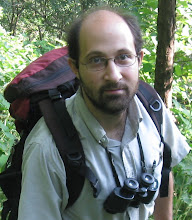Go fish and hunt far and wide day by day - farther and wider - and rest thee by many brooks and hearth-sides without misgiving. Remember thy Creator in the days of thy youth. Rise free from care before the dawn, and seek adventures. Let the noon find thee by other lakes, and the night overtake thee everywhere at home. There are no larger fields than these, no worthier games than may here be played.
-Henry David Thoreau, Walden, ch. 10
AFOOT and light-hearted, I take to the open road,
Healthy, free, the world before me,
The long brown path before me, leading wherever I choose.
Henceforth I ask not good-fortune—I myself am good fortune;
Henceforth I whimper no more, postpone no more, need nothing,
Strong and content, I travel the open road.
The earth—that is sufficient;
I do not want the constellations any nearer;
I know they are very well where they are;
I know they suffice for those who belong to them.
(Still here I carry my old delicious burdens;
I carry them, men and women—I carry them with me wherever I go;
I swear it is impossible for me to get rid of them;
I am fill’d with them, and I will fill them in return.)
Walt Whitman, Song of the Open Road
(Note that this is just the beginning of a long, but very wonderful poem, the rest of which can be viewed here)
I guess Whitman & Thoreau are considered more "serious" authors than Tolkien, but I think Tolkien captures even better the feeling of setting out on a journey, when one feels great trepidation, as well as great excitement and joy (note that this is a composite of songs found in several parts of the Hobbit & Lord of the Rings).
Roads go ever ever on,
Over rock and under tree,
By caves where never sun has shone,
By streams that never find the sea;
Over snow by winter sown,
And through the merry flowers of June,
Over grass and over stone,
And under mountains of the moon.
Roads go ever ever on
Under cloud and under star,
Yet feet that wandering have gone
Turn at last to home afar.
Eyes that fire and sword have seen
And horror in the halls of stone
Look at last on meadows green
And trees and hills they long have known.
The Road goes ever on and on
Down from the door where it began.
Now far ahead the Road has gone,
And I must follow, if I can,
Pursuing it with eager feet,
Until it joins some larger way
Where many paths and errands meet.
And whither then? I cannot say.
The Road goes ever on and on
Out from the door where it began.
Now far ahead the Road has gone,
Let others follow it who can!
Let them a journey new begin,
But I at last with weary feet
Will turn towards the lighted inn,
My evening-rest and sleep to meet.
Still round the corner there may wait
A new road or a secret gate,
And though I oft have passed them by,
A day will come at last when I
Shall take the hidden paths that run
West of the Moon, East of the Sun.
'That sounds like a bit of old Bilbo's rhyming,' said Pippin. 'Or is it one of your imitations? It does not sound altogether encouraging.'
'I don't know,' said Frodo. 'It came to me then, as if I was making it up; but I may have heard it long ago. Certainly it reminds me very much of Bilbo in the last years, before he went away. He used often to say there was only one Road; that it was like a great river: its springs were at every doorstep, and every path was its tributary. "It's a dangerous business, Frodo, going out of your door," he used to say. "You step into the Road, and if you don't keep your feet, there is no knowing where you might be swept off to. Do you realize that this is the very path that goes through Mirkwood, and that if you let it, it might take you to the Lonely Mountain or even worse places?" He used to say that on the path outside the front door at Bag End, especially after he had been out for a long walk.'


